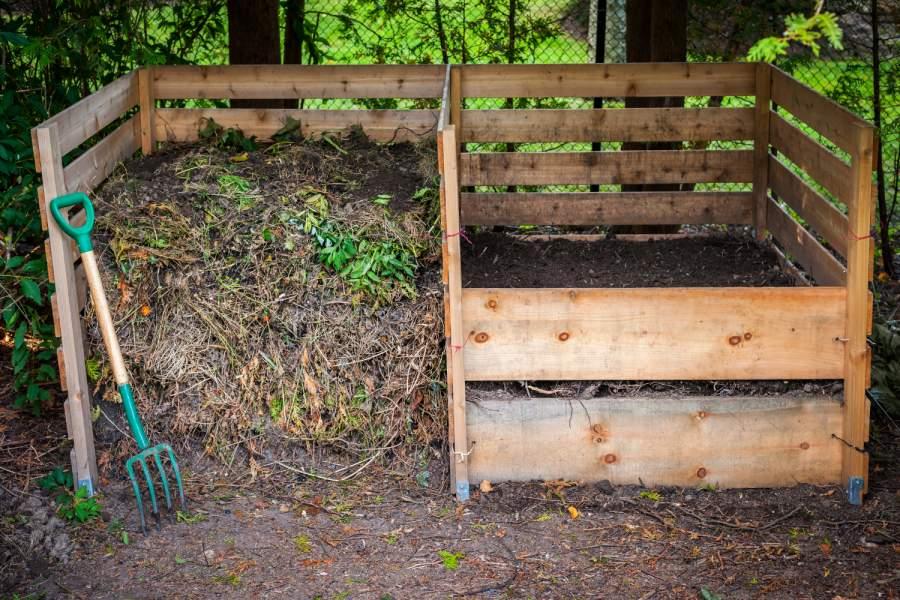Patience is crucial when dealing with compost. But sometimes life happens and you could really just do with using up your half finished pile of compost.
In this article, I cover:
- If and when you can use your unfinished compost
- Uses for unfinished compost
- Indications and tests you can perform to check if your compost is finished
- Curing compost
Pre-warning: I have gone a little scientific in the later sections of this article.
Ready? Let’s jump right in.
Can you use unfinished compost? Unfinished compost makes for great mulch. You can also bury it and leave it to finish composting underground. Avoid using unfinished compost for seeds or near plants that are sensitive to nitrogen levels. Unfinished compost mixed into soil will ‘borrow’ nitrogen making it unavailable for the plants.
Can I mix unfinished compost into my soil?
It’s generally not advisable to use unfinished or uncured compost as a soil amendment around existing plants, or in an area where you plan to plant new things in the near future.
The only times I would recommend mixing unfinished compost into your soil are:
- If you also mix in a supplementary source of nitrogen
- If you’re using it around hardy plants
- If you don’t plan to plant on that soil for a few months
The reasoning behind this is that unfinished compost will continue breaking down in your soil and tie up the available nitrogen, leaving very little for your plants.
Also, unfinished compost contains phytotoxins (organic acids) that inhibit seed germination.
Of course, there are different stages of unfinished compost and compost that is very nearly matured will be safer to use than compost that’s only just started to mature.
The problem of nitrogen immobilization
Compost is broken down by a variety of different bacteria and fungi.
These microbes need nitrogen to survive. It helps build cell structure and is essential for proper cell functioning and growth.
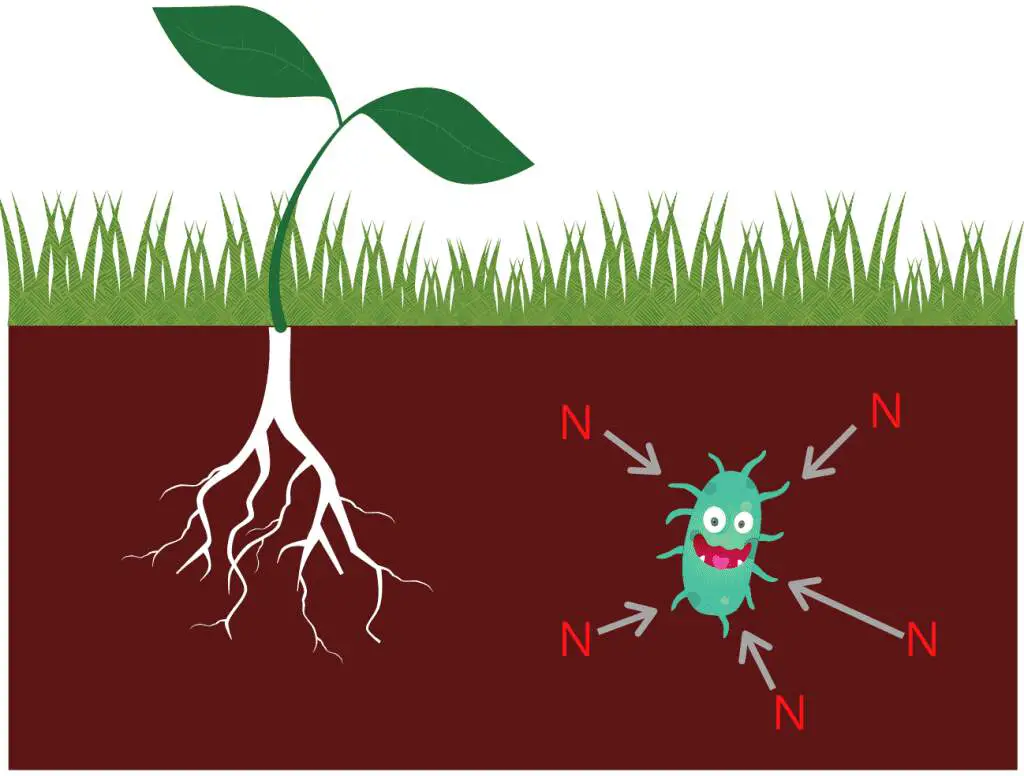
Normally the composting microbes get their nitrogen from the green materials you add into your compost bin.
But once your compost is in the ground, the microbes are free to take nitrogen from the soil instead.
The more carbon-heavy your unfinished compost is, the more nitrogen it’s going to borrow.
Since woody elements are normally the last things to decompose, it’s likely that your nearly-but-not-quite finished compost is pretty carbon-rich and you’re at risk of creating a temporary nitrogen deficiency in your soil by using it.
(I say temporary because once the compost has fully decomposed the nitrogen will be released back into the soil)
Just like bacteria and fungi, plants need nitrogen for healthy growth.
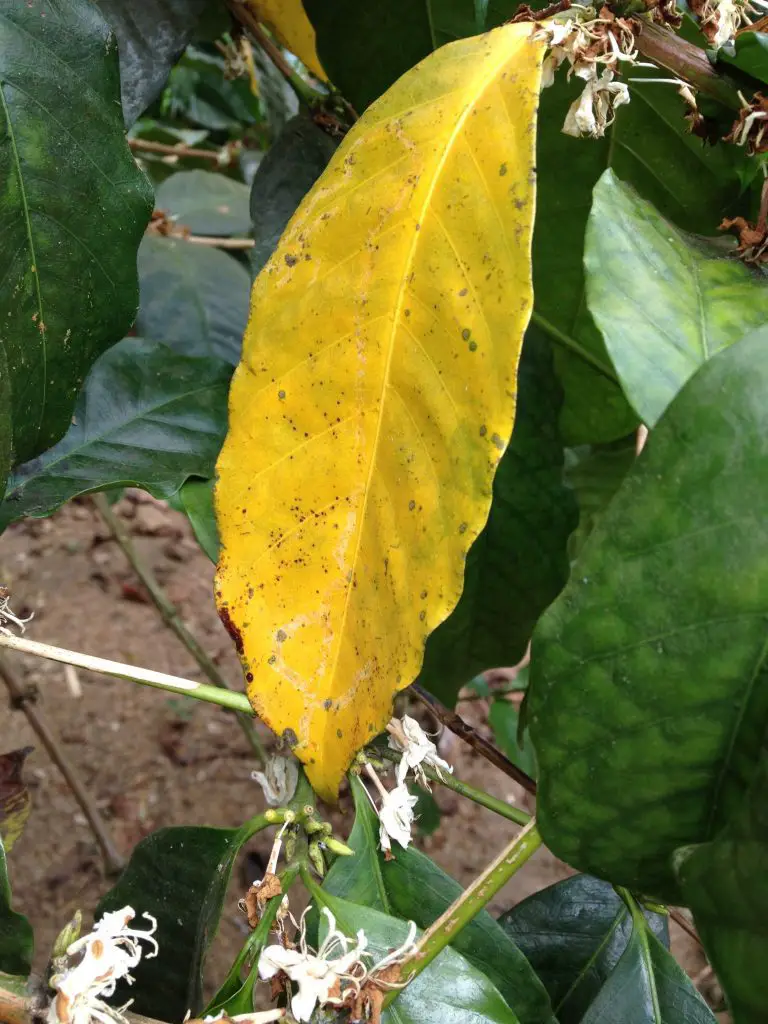
Plants growing in nitrogen deficient soil may develop yellow leaves, stunted growth and weak stems.
Of course, if you have plenty of nitrogen in your soil already then you might not notice a problem. Some people suggest you can use unfinished compost if you also add a source of nitrogen into the soil such as bone meal or coffee grounds.
Then the bacteria and fungi can use this nitrogen instead of stealing it from the soil.
Also, you need to consider what you’re planting.
Some hardy plants won’t be affected by nitrogen immobilization. Kale, turnip, okra, peas, beans, or squash should all be okay growing in unfinished compost.
Tomatoes, lettuce, peppers and similar sensitive crops won’t be.
The problem of phytotoxicity
Phytotoxicity means plant injury. In compost, it’s related to the presence of organic acids that act as germination inhibitors.
As bacteria and fungi digest the organic matter in your compost, they release organic acids. These acids accumulate and lower the pH of your compost until they finally get broken down in the later stages of composting (curing).
The more organic acids in your compost, the longer it needs to cure. Wet, compacted compost is a common cause of high acid levels.
If you use the compost before it’s fully cured, these acids will find their way into your soil and damage your plants. Organic acids inhibit germination as well as root growth.
Therefore, they’ll have devastating effects on plants that are just getting established.
Oxalic, butyric and acetic acid are all examples of harmful acids. They’re intermediate compounds that are on their way to becoming humic or fulvic acid.
For potting purposes, compost must be fully matured (turned into humus) before you use it.
Pests and smells
If your compost is barely getting started (and you still have rotting food waste visible), be very careful about how you use it.
Unless you bury it in a deep hole, the smell of composting food will take over your yard. And you’ll find yourself hosting all manner of creatures as they feast on your leftovers.
Can I use unfinished compost made from manure?
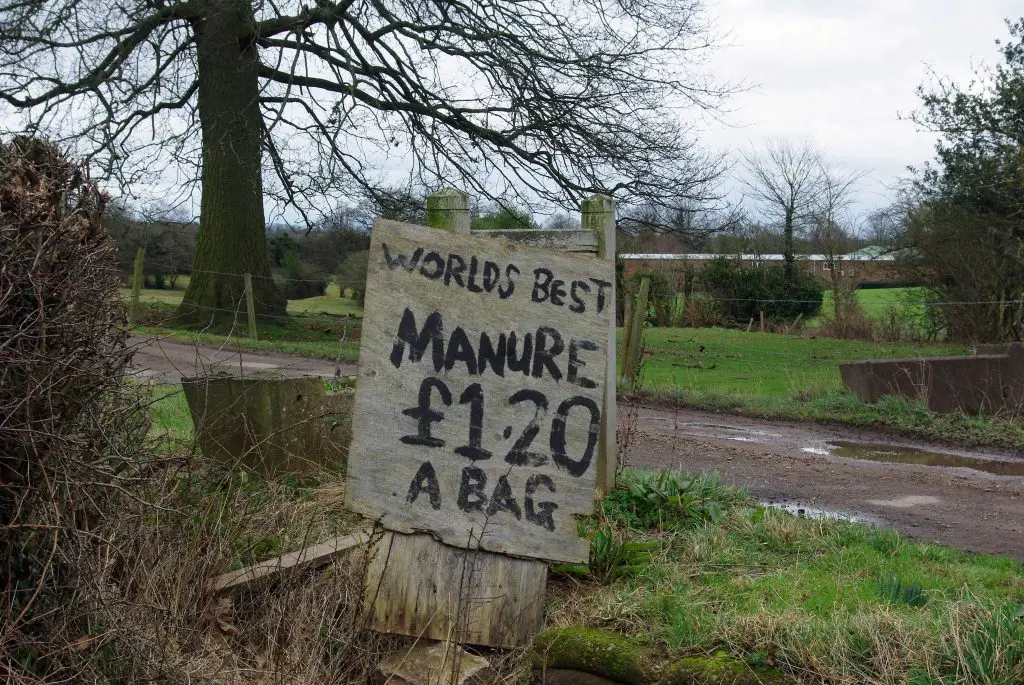
If your compost has manure as an ingredient you need to be extra careful about using it before it’s fully finished.
Fresh manure can harbor harmful pathogens like E. Coli, and you want to do your best not to be spreading this around your garden. It can also be full of weed seeds and have very high levels of ammonia (so can burn plants).
Hot composting can solve all these problems. The heat will kill the pathogens and weed seeds, and the composting process will convert the ammonia into more stable forms of nitrogen.
But you need your pile to maintain the high temperatures for at least 2-3 weeks, which is quite difficult (but not impossible) for the average backyard composter to achieve.
Most people simply rely on aging the manure to make it safe for use.
Due to the risk of pathogens, the USDA’s National Organic Program (NOP) has created guidelines for the safe use of manure around edible crops.
- If the edibles come into contact with the soil or hang close to the soil you should wait at least 120 days from when the manure was fresh to use it.
- If the edibles don’t come into contact with the soil (or you plan on cooking the edibles) you should wait at least 90 days from when the manure was fresh to use it.
So don’t use any manure that’s less than 3 months old.
What to do with unfinished compost
So you’ve decided to steer clear of using your unfinished compost in your tomato plant bed, but you don’t want it to go to waste.
What else can you do with it? Here are three ideas.
Use it as mulch
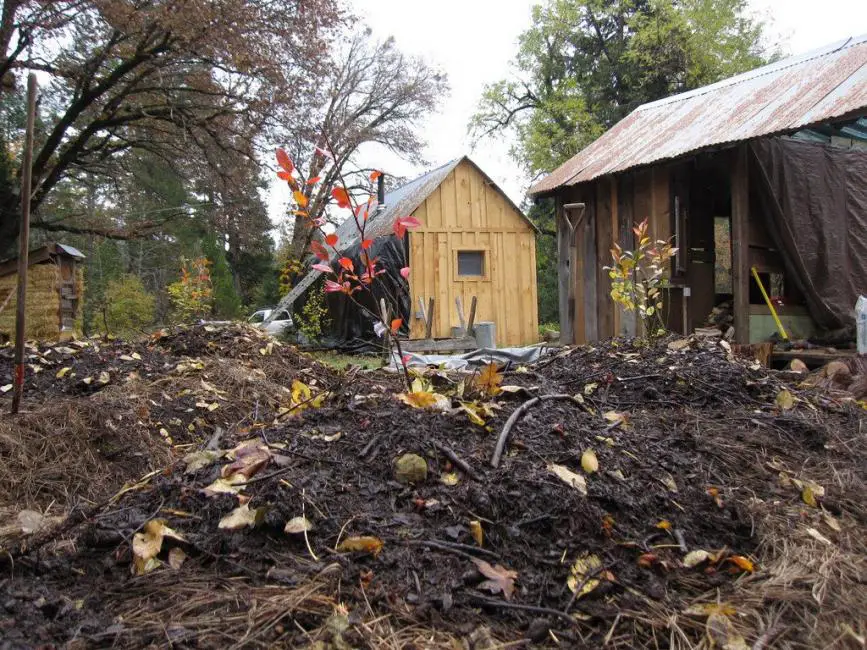
One of the best uses for unfinished compost is as mulch.
Take the compost and layer it 2-3 inches thick on top of your soil, making sure to stay 2-3 inches away from any plant stems.
The compost will continue to break down and the worms and rain will work the resultant nutrients into the soil below. Because the compost is on top of the soil and not in it, you won’t have any nitrogen loss problems.
The best time to mulch is mid-late spring once the ground has fully thawed after winter. You can also mulch in the fall to protect your soil over winter.
Wait until most of your plants have started growing so you can ensure you’re not mulching over any potential seedlings.
Mulch is beneficial for plants in terms of weed suppression and retaining moisture. A thick layer of mulch blocks sunlight from any weed seeds in the soil below making it impossible for them to germinate.
It also helps protect the ground from the heat of the sun and stops it from drying out.
One downside to using compost as mulch is that it needs to be replenished often. As the compost gets worked into the ground, it stops functioning as mulch and just becomes part of the soil.
If you don’t have enough compost to effectively mulch your chosen area, you can either mix it with another organic material like wood chips or you can side dress the area instead.
Trench composting
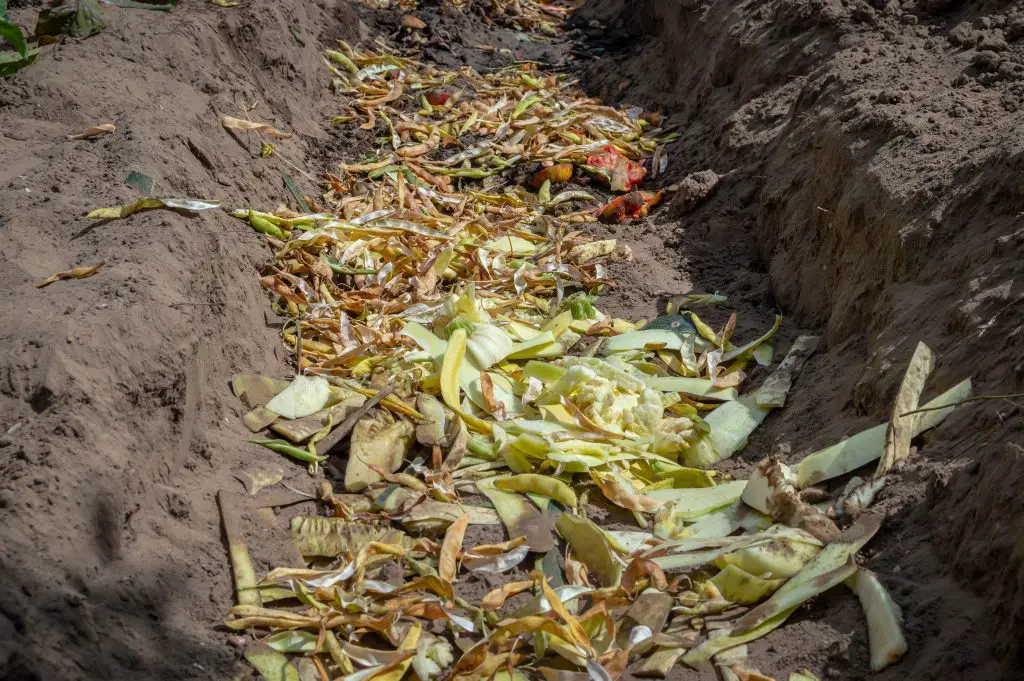
A lot of the time I find myself wanting to use my unfinished compost just to free up space in my compost bin.
If this is the case, and I don’t mind not using it in my garden straight away, I opt to bury it. Since the compost is unfinished, you’re essentially trench composting.
- Pick a spot in your garden you want to use for planting in a month or two (but not straight away)
- Dig a hole 8-10 inches deep
- Chuck the unfinished compost in the hole and cover it with soil. Leave a little mound of soil because as the compost finishes its volume will shrink.
Over the next month or two the compost will break down and the worms will work to spread it out.
After 2-3 months, the area around where you buried the compost will be packed with nutrients and will be a perfect planting bed.
Trench composting is your best option for compost that’s more unfinished than it is finished. The less mature your compost is, the longer you should wait before planting on the area.
Screen the unfinished compost and only use the finished parts
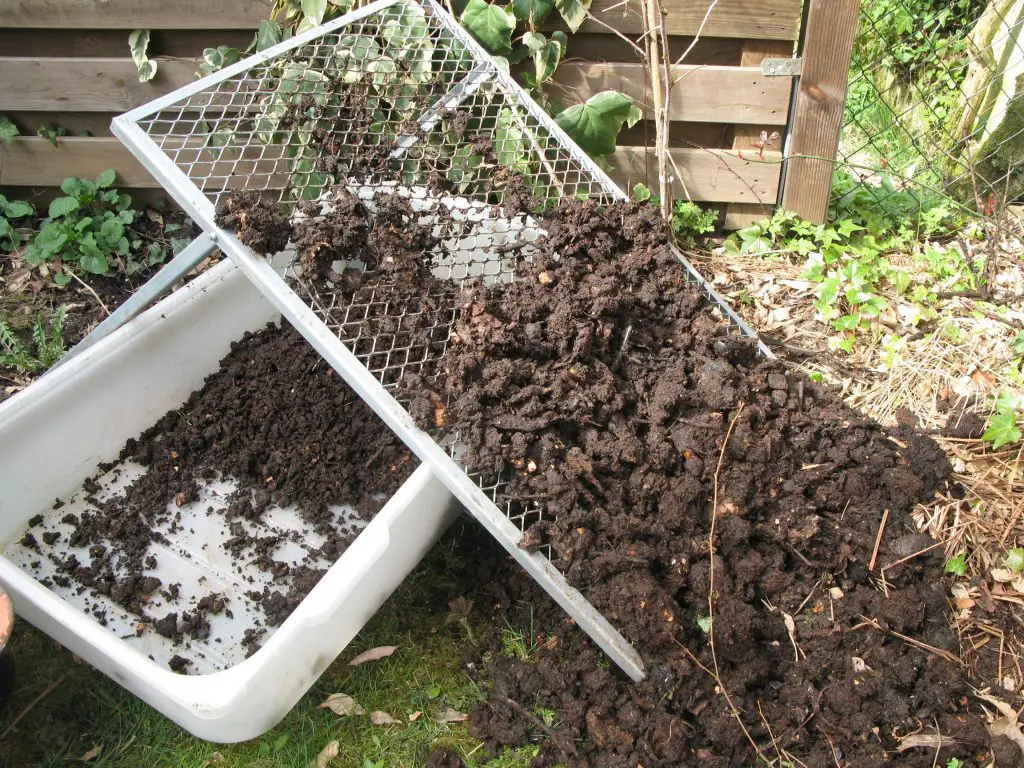
Assuming your compost is most of the way there, you should have quite a bit of finished compost mixed in with the unfinished bits.
Screen the compost through a ½” wire mesh. Anything that falls through is finished compost, the larger clumps will be left behind and you can put them back into your compost bin to go through another cycle.
You can either buy a compost screen (this one is perfect for the job), or make one yourself.

Compost screens are relatively easy to make at home if you have the right equipment.
Make a 4-sided frame with some wood, and then cover it with wire mesh. ½” holes are advised, but you can go for bigger or smaller holes if you want.
A milk crate can stand in for a compost screen if you’re in a hurry, but be aware that the holes are quite big so it might let some uncomposted stuff through.
Once you have your compost screen, put it over a wheelbarrow and start sieving the compost through it. I tend to try and break up any clumps of compost I see, but if you’re in a hurry you don’t need to worry about this.
Just dump the compost on, shake, and then put whatever doesn’t go through back in your compost bin.
You should end up with a nice looking wheelbarrow full of finished compost.
How to tell if compost is finished
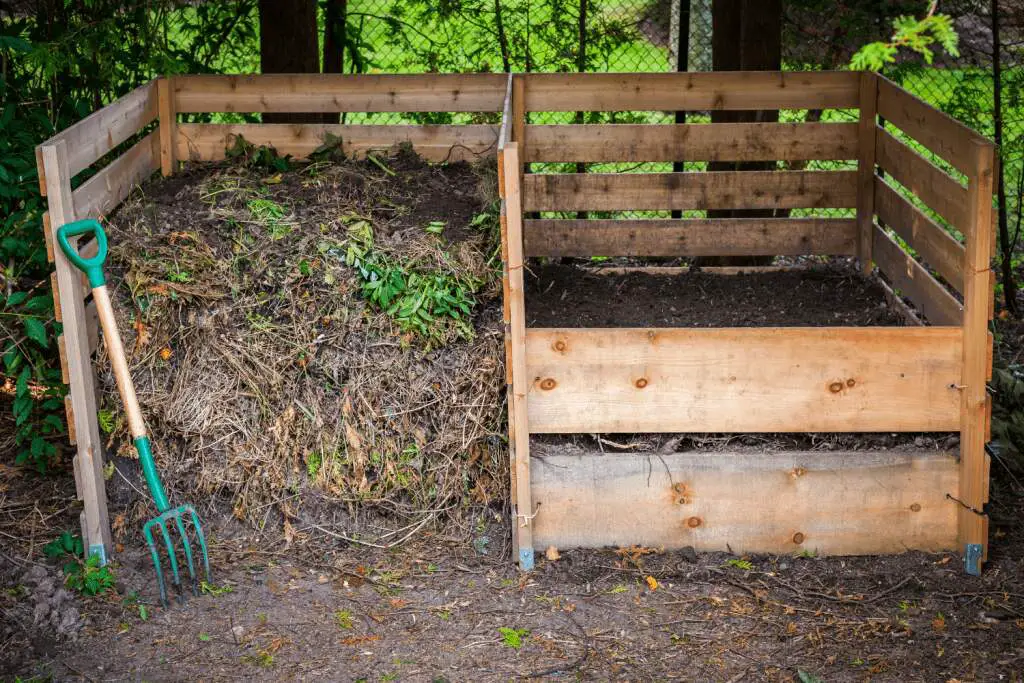
Compost is fully matured when it’s dark brown to black in color and smells earthy. It should have a crumbly texture and 99% of the organic matter you started with should be unrecognizable.
Only really tough things like whole avocado pips, bones, and large twigs should remain (these things can last for years in compost!).
You can pick out any of the larger leftover things and put them in with your next compost cycle.
Another visual clue is the size of the pile. The volume of the compost should have shrunk by about 50%.
If you’ve been hot composting, a good indication that the compost is nearly finished is that it doesn’t heat up anymore when you turn it.
Once the compost has stopped heating up, you need to wait several weeks (4 to 6 weeks is best) for it to cure before it’s fully matured. Some people choose to leave it curing for a lot longer, but this is a personal preference.
With cold composting, it’s a little more complicated. Here, the look and the feel of the compost are more important.
A good time estimate is that after a year, most piles should be finished.
Note that the application you want to use the compost for determines how ‘finished’ you need the compost to be.
For most uses, the compost doesn’t need to be 100% finished and a few visible leaves won’t matter. But for seed mixes or nitrogen-needy plants, you need the compost to have fully cured and reached the humus stage.
How to test if compost is finished
Looks can be deceiving. Sometimes compost might look finished but it might not be properly cured yet.
If you’re not sure and want to use the compost for a sensitive application like seed planting, I would suggest testing the compost first.
There are a couple of easy home tests you can run.
Check if compost is finished using the radish test
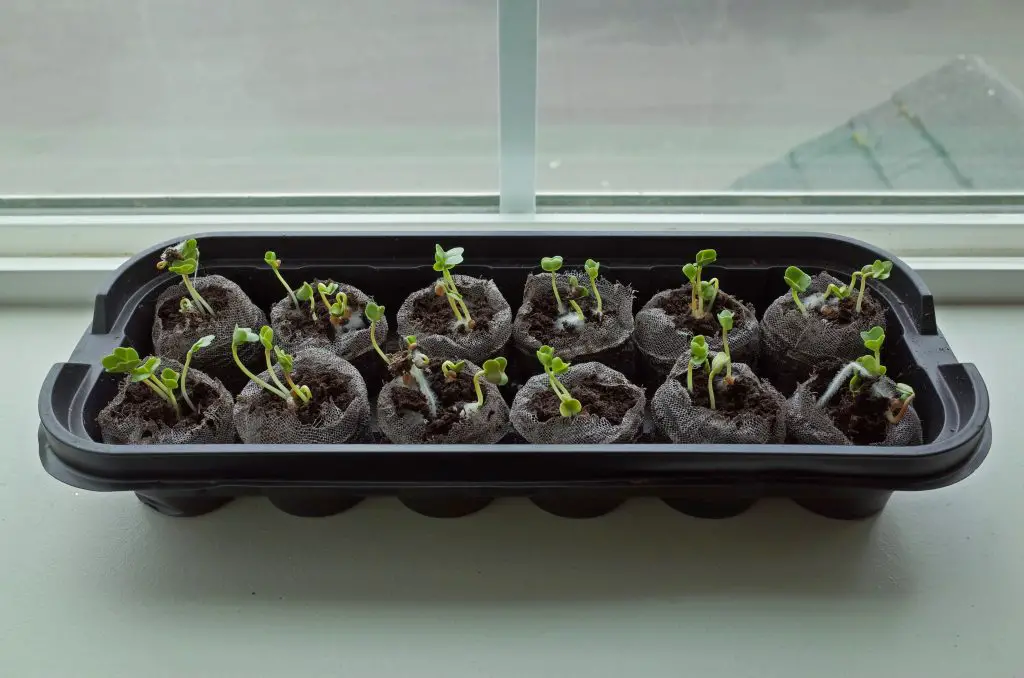
- Fill two containers up with your compost
- Sprinkle radish seeds onto the compost
- Wait up to five days
- If 75% of the radishes germinate, you have mature compost
Radishes are perfect for this test because they germinate super quickly. If the seeds are going to germinate, they will do within 4-5 days.
Germination is a good thing to test because unfinished compost contains organic acids that inhibit seed growth. If the seeds germinate, it means these acids aren’t present and the compost is safe to use for any application.
If you want to go the extra mile, you can fill two more containers with soil and sprinkle some radish seeds on them (as a control). This will eliminate the risk of you just having dodgy seeds, but thinking it’s an issue with your compost.
Check if compost is finished using the bag test
- Put a few handfuls of compost in a plastic bag and wet it
- Seal the plastic bag
- Leave the plastic bag at room temperature for 5-7 days
- Open the bag and smell it
- If it smells earthy, the compost is finished. If it smells sour or like ammonia, the compost isn’t finished
What is curing compost?
Curing is the final stage of composting.
It’s when you leave the compost to rest without adding any new materials.
The temperature of the compost will fall and the remaining microbes will work to stabilize the compost. Organic matter is converted to humus, ammonia is converted to organic forms of nitrogen, and the ecosystem diversifies.
All this turns your compost the desired end product, humus!
While compost is curing, it needs to be kept moist and aerated, but not to the same extent as an active compost pile. There’s no need to turn the curing compost.
Humification
During curing, humification takes place.
Humification is the process of turning the composted organic matter into humus – a stable form of compost.
Unstable acids are converted into higher value, biologically stable compounds such as fulvic or humic acids.
Ecosystem maturity
The compost ecosystem matures and diversifies during the curing phase.
The bacteria populations decline, but the microorganisms that feed on bacteria and other low-level biota increase. Fully cured compost will have a rich soil food web with larger organisms like nematodes feeding on things lower down the food chain.
The longer the curing stage, the more diverse the microbial population becomes.
Nitrification
In the final stages of composting, ammonia is converted into nitrate, which is then converted into nitrite. This process is called nitrification.
Nitrate and nitrite are organic forms of nitrogen and are both more chemically stable and available to plants than ammonia.
During curing, the nitrification process finishes off and by the majority of the nitrogen should be in an organic form.
Do I need to cure my compost?
Curing your compost means there’s no risk of it harming your plants when you use it. If you don’t cure your compost, it may still have high levels of unstable, potentially harmful intermediates like acetic acid. Given more time, these intermediates will convert into valuable compounds like humic acid.
How long should compost sit before planting
Compost should sit and cure for anywhere from 1 month to 1 year before planting.
Compost you want to use for seedlings should sit for longer than compost that you plan to use as mulch. And compost that was well tended to won’t need to cure for as long as a pile that was left to get too wet and compacted.
